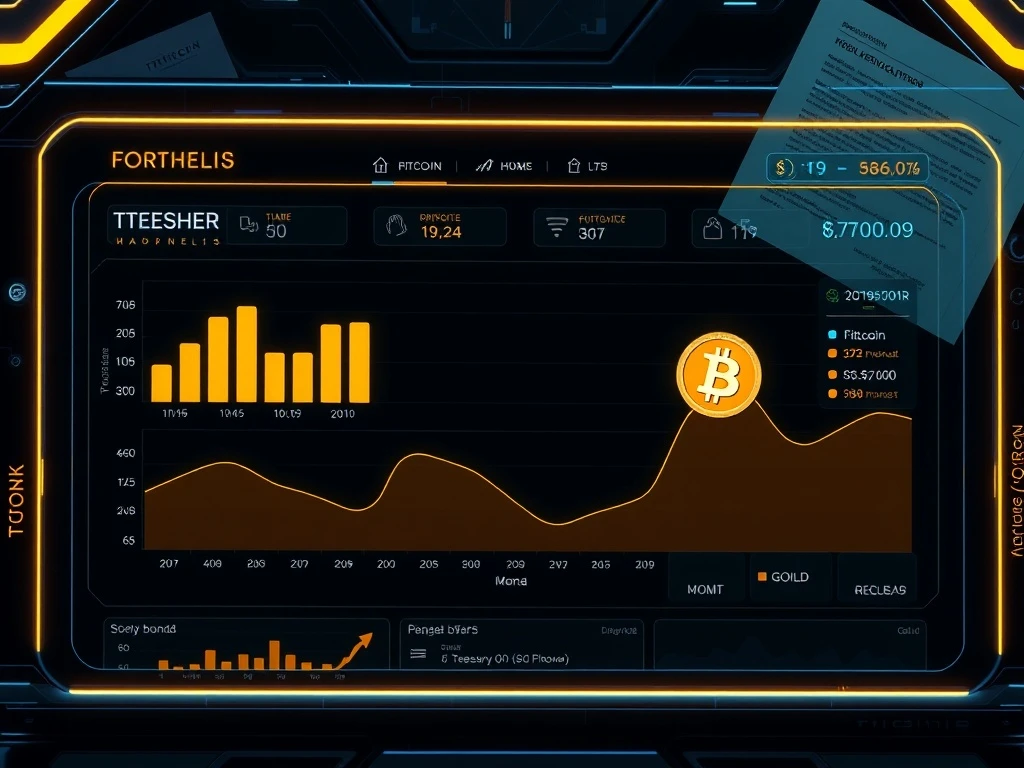Tether Shocks Market with 90% Drop in Treasury Bond Purchases – What’s Next for USDT?

In a bold move that has sent ripples through the crypto and traditional finance worlds, Tether has reduced its U.S. Treasury bond purchases by a staggering 90% in Q2 2025. What does this mean for the stability of USDT and the future of stablecoins? Let’s dive into the details.
Tether’s Dramatic Shift Away from Treasury Bonds
Tether Operations Limited, issuer of the world’s largest stablecoin USDT, purchased just $7 billion in U.S. Treasury bonds in Q2 2025 – a massive drop from $65 billion in Q1. This strategic pivot comes as the company diversifies its $162.5 billion reserve portfolio. Key changes include:
- Direct Treasury holdings reduced to $105.5 billion
- $24.4 billion in indirect exposure through reverse repos
- $17 billion reduction in non-U.S. Treasury holdings
Why Is Tether Diversifying Its Portfolio?
The stablecoin giant is moving aggressively into alternative assets, signaling a major shift in reserve management strategy:
| Asset Class | Allocation |
|---|---|
| Bitcoin | Increased |
| Gold | Increased |
| Corporate Equity | 120+ companies |
| Blockchain/AI Tech | Expanding |
Regulatory Storm Clouds Gather Over Stablecoins
With the EU’s MiCA regulation already in effect and the U.S. GENIUS Act looming, Tether’s moves appear strategically timed. The company maintains $5.47 billion in excess reserves, but potential regulatory changes could force further adjustments if:
- Stricter Treasury requirements are mandated
- Indirect exposures like repos are disqualified
- Non-Treasury assets face compliance issues
What This Means for the Stablecoin Ecosystem
Tether’s actions reflect broader industry trends as stablecoin operators navigate an increasingly complex regulatory landscape. The $50 billion gap between USDT issuance and direct Treasury backing remains a potential vulnerability if regulations tighten.
FAQs About Tether’s Treasury Bond Reduction
Q: Why did Tether cut Treasury purchases so drastically?
A: The move reflects a strategic diversification into higher-yield assets like Bitcoin and corporate equity, while preparing for potential regulatory changes.
Q: Is USDT still fully backed after this change?
A: Yes, Tether maintains $162.5 billion in reserves against $157 billion in USDT, including $5.47 billion in excess reserves.
Q: What are the biggest risks to Tether’s new strategy?
A: Regulatory changes that mandate higher Treasury holdings could force costly portfolio rebalancing.
Q: How does this affect other stablecoins?
A: Competitors may face pressure to similarly diversify or increase Treasury holdings depending on final regulations.









